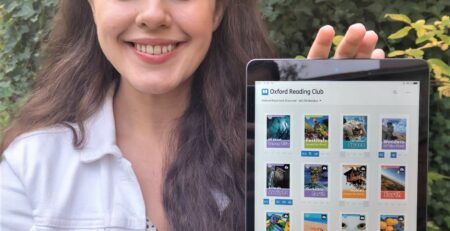Teaching English to Very Young Learners: If you want them to move mountains, let them get out of their chairs and get messy with Art!
Teaching very young learners has always been one of the most challenging things in the field of education. The age of the learners in combination with their short attention span and their profile, makes teaching them a demanding task, yet a most rewarding one.
Very young learners are kinaesthetic learners which means that they learn while moving around, while being active. They love outdoor activities and whatever has to do with the natural world. They are egocentric and easily bored, that is why the teacher has to prepare a lot of activities for the same learning objective. They are less shy than older learners since school has not deprived them of their spontaneity and they are not afraid to make mistakes. They enjoy imitating and are skillful in listening accurately, that is why it is important that the teacher is a perfect language model for the students.
Moreover, very young learners enjoy learning through playing, acting, making and doing but mostly by exploring and discovering. are imaginative. They understand language as units not separate words. They interpret meaning without necessarily understanding the individual word and they learn indirectly rather than directly. Young children love praise and reward and should be given positive feedback every time they achieve a goal. Finally, they develop physically, mentally and conceptually every day. That is why the activities differ from level to level and the teacher should always pay attention that they are age appropriate.
As regards the basic methodology when teaching very young learners online, the focus should always be on Listening and Speaking. The emphasis should be on the meaning and not on the form for these levels, and this can be achieved through fun, engaging activities that create the need for communication. Authentic material, songs, stories, fairytales, plays, games, movement and interaction are essential to teach VYL, as tasks that arouse their curiosity and initiate production – Art can surely achieve this result. Sole use of L2 in the classroom is essential, same as routines since children of that age feel comfortable and safe knowing what follows.
The benefits of teaching English through Art to VYL are numerous, as they are exposed to a wide range of Art-based materials and practices
First of all, through Art, we can present and discuss difficult concepts and the different characteristics between them. For example, Art movements like Abstract Art and Realism, are presented visually to the Very Young Learners, as they are quite difficult to comprehend and analyse for their age. As we can understand, the use of real paintings in a class has many advantages for the students and makes the lesson more memorable for them.
Art projects boost students’ critical thinking and help them in developing creative problem-solving skills. Educators can have multiple Art-based projects and give students the chance to work together, as teams or pairs, to create their own works of Art, to solve Art-based puzzles or to play creative games.
Moreover, teachers must have a bank of creative activities always in mind. Very Young Learners get easily bored and easily distracted. They benefit a lot from kinaesthetic and visual-based activities, although not all of them are the same. They have different developmental stages as well as interests, so the activities should be interesting and engaging for all of them. Through this variety of different Art-based activities and games, students develop their fine and gross motor skills, as well as their risk-taking skills and inventiveness when coming face to face with riddles and puzzles. Also, they are solely exposed to L2, so they develop their language skills as well.
It is advised to have them work together to create something, as at this age they are very egocentric and this is a characteristic trait that all educators should work on. When learning through art students engage constructively with each other. They even teach one another by assigning them different parts of the same project. Students learn to share materials, work with others, help their classmates, comment on others work, thus empowering social skills, collaboration and group learning.
Furthermore, Art education connects young students with their own culture as well as with the wider world. As mentioned above, students of these ages are very egocentric and feel that everything is for and about them. Through the exposure to many different forms of Art, materials, Art movements, Artists and cultures, they learn about the world around them and how they should be part of it. They come in contact with diversity and learn how to accept it.
Summing up, Art lessons are always very fun and entertaining for students and teachers alike. They offer a variety of benefits that play a major role in students’ development in all fields. Children can create their own pieces of Art and learn and understand the world through them. As Julia Cameron wrote “We are, ourselves, creations. And, we, in turn, are meant to continue creativity by being creative ourselves”
Elizabeth Veliou, Teacher- Teacher Trainer
BA in English Language and Literature (AUTH)
MA University of Bristol, UK
Founder of My little House of English
Cameron, J., (2006), The Artist’s Way Workbook, England: Penguin Books Ltd
Ersoz, A., (2007), Teaching English to Young Learners, Ankara: EDM Publishing
Rodrίguez-Lopez B. and R. , Varela-Mάndez, (2004) Models of Teaching Foreign Languages to Young Children, Didάctica (Lengua y Literatura) vol. 16, 163-175, pgs. 167-168











